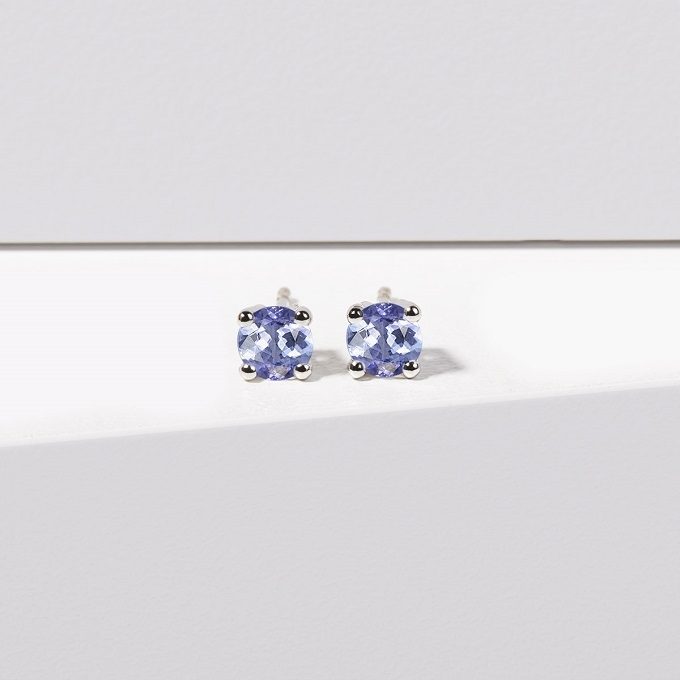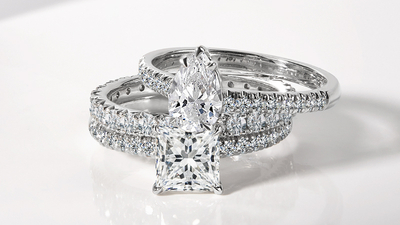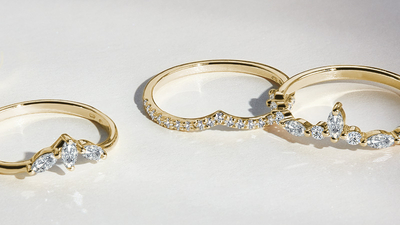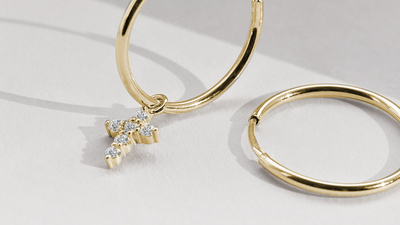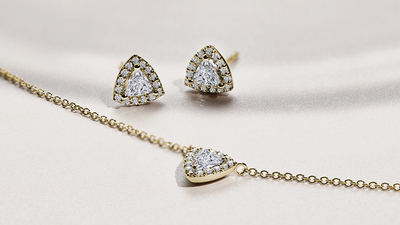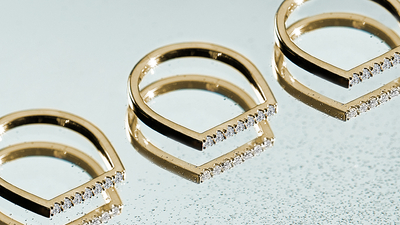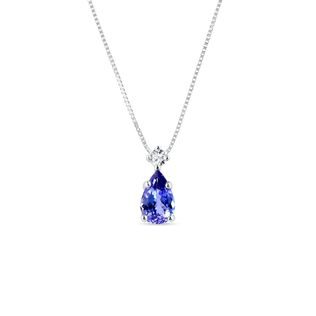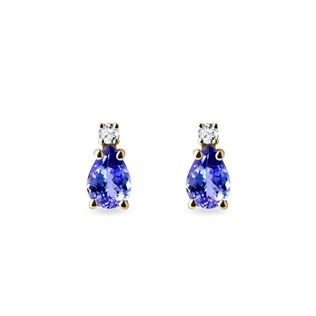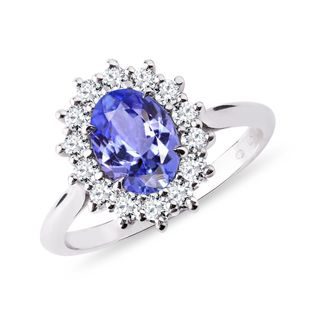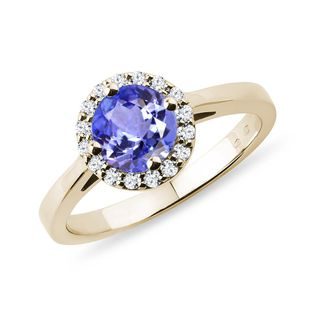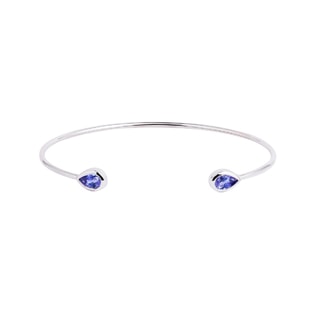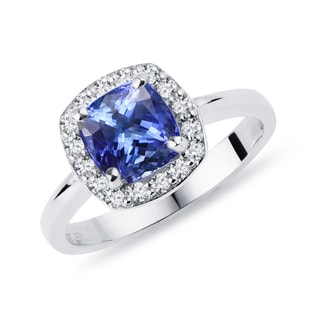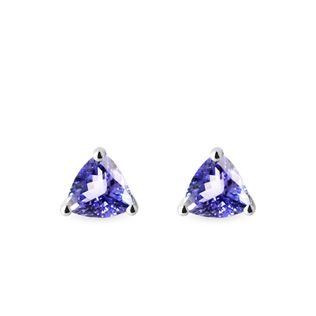Tanzanite, as the name of this wonderful gemstone suggests, comes from Tanzania. The only deposit in the world is also located in this country. It was discovered only recently, in 1967. This stone, which is brown in nature, was first found by Masai shepherds. During a massive storm, a lightning strike started a fire, and afterwards a Masai called Ali Juuyawatu noticed that there were several blue stones on the ground which hadn’t been there before. By this, it was found that the brown stones turned into blue minerals due to the high temperatures – and that’s how tanzanite was discovered.
Tanzanites were originally used as replacements for sapphire. However, their popularity quickly increased thanks to the Tiffany company, and this also meant the increase of their price. The stone was originally called blue zoisite, but unfortunately, the word was too similar to suicide. Therefore, Tiffany’s CEO Harry Platt suggested the name we use for this gem today – tanzanite.
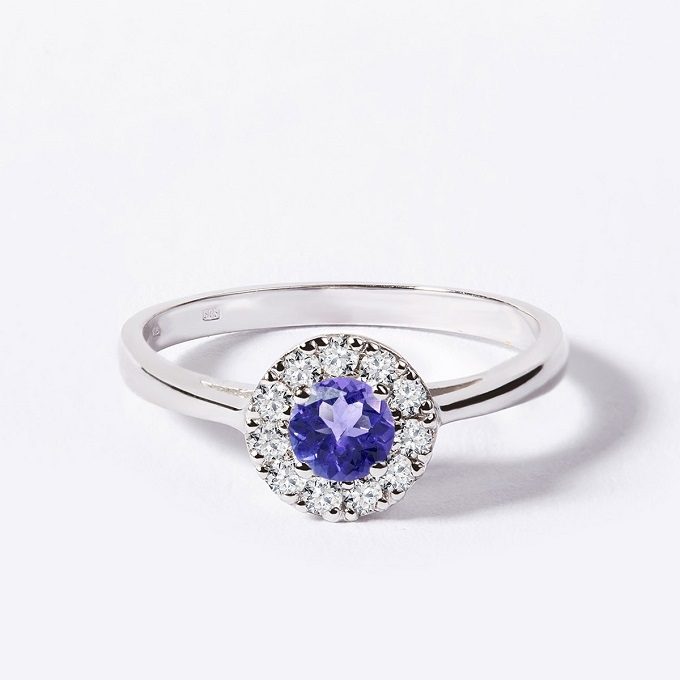
A precious gift for various occasions
Tanzanite is sometimes talked about as a stone of the 20th century because its history isn’t as old as that of other gemstones. It even became so popular that it was added to the list of birthstones. The list hadn’t been changed since 1912 until tanzanite was added to it. It is a protector of people who were born in December.
Therefore, a necklace, a ring with tanzanite, or tanzanite earrings will especially suit Sagittarius and Aquarius people. Tanzanite is also great for the 24th wedding anniversary, and according to a tradition which emerged shortly after its discovery, jewelry with this stone is a great present to celebrate the birth of a child.
Tanzanites have already earned their place in the spiritual world. They are said to bring concordance and harmony into life. It relieves the stress of its wearers and helps them in difficult life situations.

Tanzanite from the point of view of science: the origin, features, and properties
Tanzanite is a variety of zoisite, along with pink thulite or green anyolite (it is a metamorphic rock also known as ruby zoisite). Chemically, it is a calcium aluminium hydroxyl sorosilicate. In nature, it has a brown, brown-green, or light violet color. Its blue color is created when the stone undergoes temperatures of 750–1110 °F. The heated pieces need to have no cracks and inclusions. The blue color is caused by dispersed inclusions of vanadium.
A significant feature of tanzanites is pleochroism. Depending on the color and the angle of the light, we can see varicolored highlights inside the stone. Natural tanzanites are usually purple, dark blue, red to violet, and yellow-green or brown. After heating, only blue, purple, and violet shades remain; the brown, yellow, and green ones disappear. Another effect that can be seen in tanzanites is the cat’s eye effect. This effect stands out best with a cabochon cut.
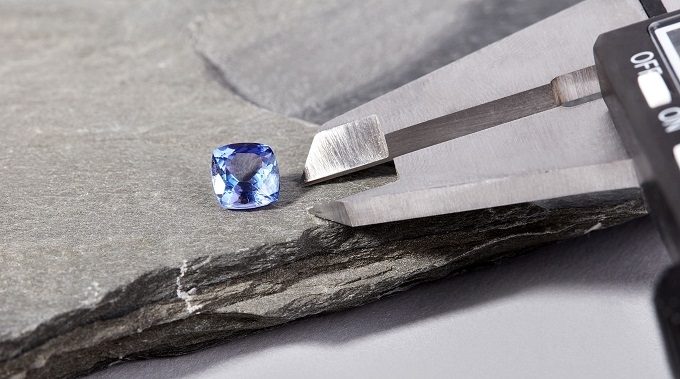
Tanzanites crystallize in the orthorhombic system. They occur in the form of columnar prismatic crystals with striations. They often form penetration twins (a form of crystal twin in which one seemingly “goes through” the other). They are slightly softer than silicon, i.e. 6–7 on the hardness scale. They should avoid contact with acids, and ultrasound cleaning is not suitable for them. They have a white streak, vitreous luster, and they are fragile. They don’t have the ability of fluorescence. For gemcutters, processing these stones is a real challenge. The gemcutter has to decide in which direction the cut should be made so the pleochroic tanzanite properties are showcased to the fullest extent. Moreover, the tanzanite is a very fragile and soft material which can often crack.
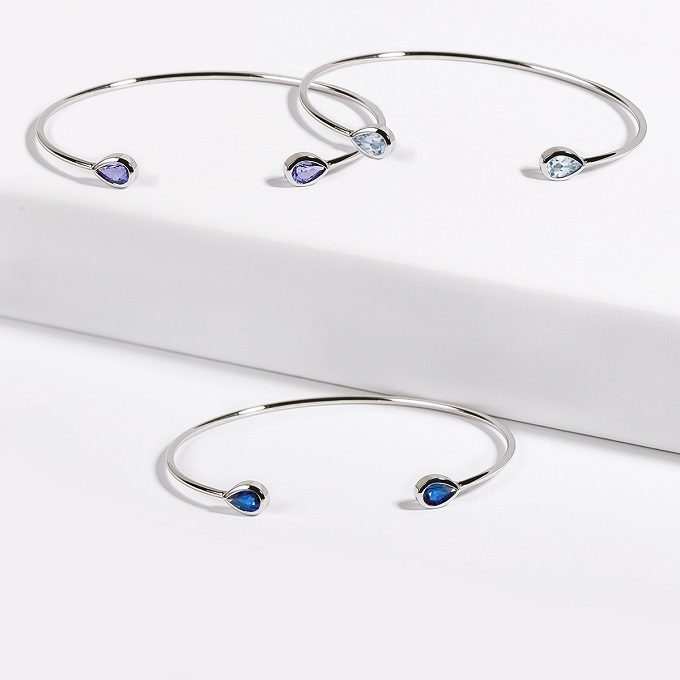
How to pick the right tanzanite jewel
A high-quality cut tanzanite should have a beautiful, deep blue-violet color. In a perfect world, we should see highlights of up to three different shades of blue, violet, and purple depending on the color and the angle of the light. When the light is warmer, tanzanites appear rather violet or purple; in the daylight, the blue tones prevail. The degree to which the stone is blue also influences its price. More expensive tanzanites have a deep blue hue with significant pleochroism. More affordable pieces usually have lighter, pastel colors. A great advantage of tanzanites is that inclusions in the stones are exceptional.
The best combination for jewelry is the combination of a tanzanite and white gold. With white gold, the stone’s internal radiance and various purple and blue highlights stand out better, as they are not disturbed by the colorful metal shining through. Among KLENOTA jewels, there are also tanzanites with yellow or rose gold. Tanzanite looks especially stunning in combination with diamonds.
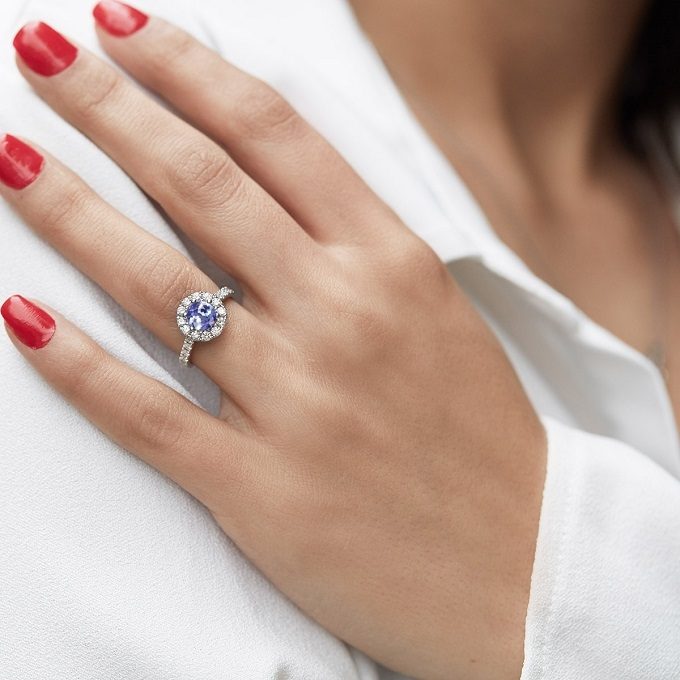
Besides traditional oval and round cuts, tanzanites can also come in more unusual shapes. Gemcutters have a vibrant creativity, and they can create exceptional pieces that are true originals. In our collection, you can fall under the spell of a cut in a rounded triangular shape, which is poetically called a trillion cut. Also, pear-shaped variants look amazing. If you prefer larger stones, we recommend a cushion cut (a square cut with rounded corners).
If you choose a tanzanite jewel, you definitely won’t regret it. With regard to the limited natural sources of tanzanites, their price (which is already high enough) will only increase, and so will the value of your jewelry. Moreover, tanzanites are unique and rare.
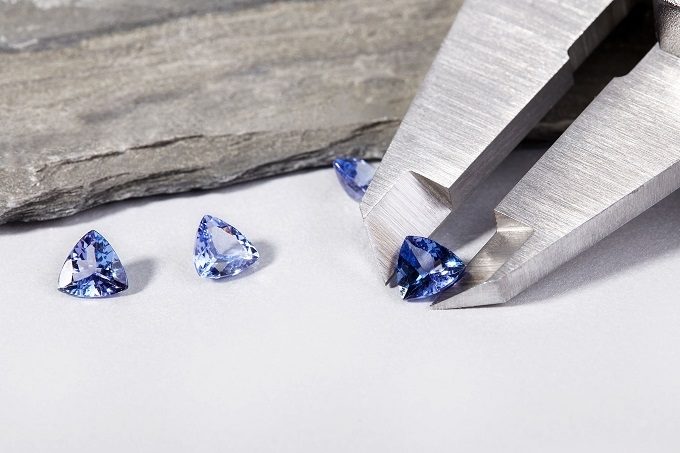
How to preserve the beauty of a tanzanite
Most tanzanites used in jewelry go through artificial modifications, but this doesn’t decrease their quality or value. The chances of a stone turning blue naturally (e.g. by a lightning strike or in fire) are low. Therefore, tanzanites mined in mines need a little help. They are often slowly heated to get their precious coloration. The prices of artificially heated and natural tanzanites are comparable.
Tanzanites are fragile stones – therefore, they need to be handled very carefully. Always let professionals clean them, so you don’t risk damaging the stone. Tanzanites don’t handle overheating and temperature shocks very well. You should also protect them against chemical products.

Famous and record-breaking tanzanites
The only deposit of this unique stone is located in Tanzania in Africa. Tanzanites are mined near the city of Arusha, close to the Mount Meru volcano in the Merelani mountains, about 31 miles from Kilimanjaro as the crow flies. In 1971, the mines were nationalized, and in 1990, they were divided into four blocks. Two blocks are rented by mining companies and the other two blocks can be used by small local miners. In 2005, one of the blocks was rented to miners for 40 million dollars.
The largest tanzanite which has been found so far is 22 × 8 × 7 cm large, and it weighs 16,839 carats, i.e. nearly 7.5 lbs. It is called Mawenzi, and it was named after the second highest peak of Kilimanjaro.
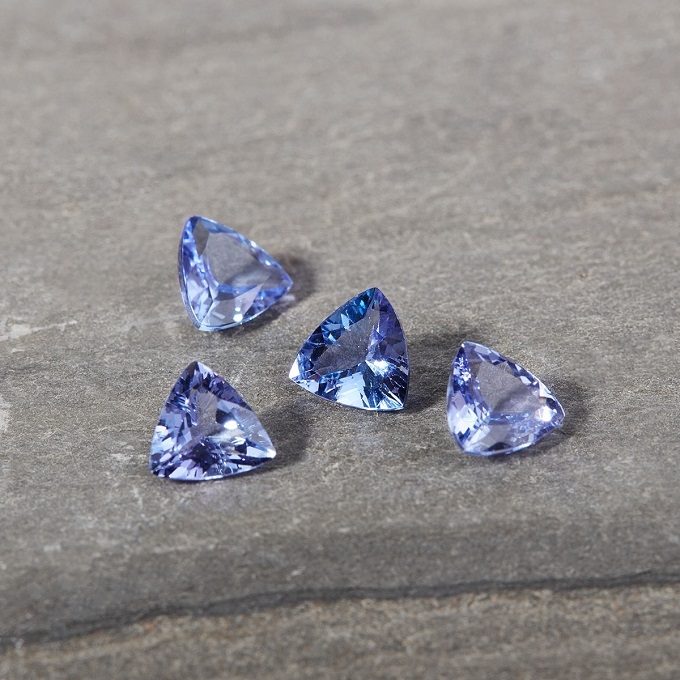
The Queen of Kilimanjaro is the name of one of the most famous cut tanzanites in the world. It weighs 242 carats (about 1.7 oz), and it is set in a stunning tiara. It is accompanied by 803 precious green garnets and 913 diamonds. The tiara is made of 18-karat gold and is currently a part of a private collection of Michael Scott, the first CEO of Apple.
In the movie Titanic, a splendid necklace called the Heart of the Ocean was featured. In the movie, it was a necklace with a blue diamond. In fact, the stone was a tanzanite. Only a few people know that this oval-cut jewel really existed in history. It was owned by Louis XVI. It was later lost, never to be found again.
Tanzanites are also popular with celebrities. A tanzanite ring with a large cushion-cut stone was gifted to Beyoncé by her husband, Jay-Z. The stone has a remarkable color and weighs more than 10 carats. Anne Hathaway has sported tanzanite earrings for a night at the Oscars. Cate Blanchett also chose the stone for the same occasion in 2011. She bedecked her neckline with a necklace with diamonds and tanzanites. Sarah Jessica Parker also owns jewelry with these beautiful gemstones.
